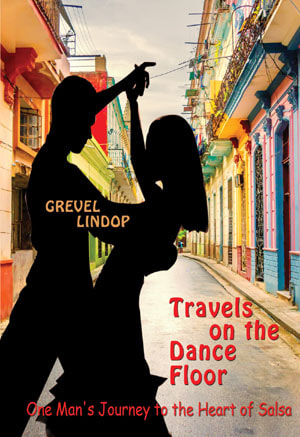
When poet and biographer Grevel Lindop takes up salsa dancing in rainy Manchester, all he has are size 12 feet and excruciating adolescent memories of ballroom dancing lessons. But salsa has a way of getting into your blood. Intense and intimate, sexy and addictive, the adrenalin-pumping Afro-Latin-American dance style soon becomes an obsession. But can he, as a 6'4" white English poet, ever really experience the spirit of the dance? Travels on the Dance Floor is Grevel Lindop's vibrant and evocative account of his solitary journey to the streets, bars and dance halls of Cuba, Venezuela, Colombia, Panama, Puerto Rico, the Dominican Republic and Miami, where he encounters danger, romance and music in his search for the roots of salsa.
“Captures perfectly the edgy partnership of addiction and physical fulfilment embodied by dance.” Ruth Gledhill, The Times.
“Very entertaining and adventurous.” Lord Asquith
“I heard this book on Radio 4 and as a keen salsa addict, I immediately got hold of a copy. I'd like to go on a salsa holiday, and this book explained what the 'scene' is like in half-a-dozen Latin American cities.” William Cohen, Vine Voice
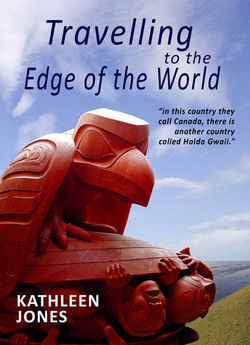
Kathleen Jones travelled to the islands of Haida Gwaii, off the northernmost coastline of British Columbia, to talk to a nation who have lived in harmony with their environment for more than ten thousand years.
Their guiding principle ‘Yah’Guudang’, is about “respect and responsibility, about knowing our place in the web of life and how the fate of our culture runs parallel with the fate of the ocean, sky and forest”. The Haida Nation are at the forefront of environmental opposition to the commercial exploitation of the planet and they have a blueprint - the Haida Land Use Vision - for our survival.
But there is a darker side to Haida history. Kathleen Jones uncovers the story of how the British Colonial administration reduced the population from more than twenty thousand to just over five hundred by a policy that has been identified as ‘cultural genocide’. Haida artist Bill Reid, whose sculpture ‘Raven and the First Men’ appears on the cover, wrote that, “It is one of the world’s finest tributes to the strength of the human spirit that most of those who lived, and their children after them, remained sane and adapted”.
Review: - "I did not want to return from the Haida, from their lands and the experience that she writes about so beautifully. It touched me in so many ways: the instincts of the nomad, the desire for solitude, the landscape as a beating heart of a nation, our lack of care of the land, the destruction, the horrors of colonialism, the joy of art, the wonders of the ocean . . . Kathleen Jones reflects on so many of the questions we should be asking about our planet and how we live on it." Avril Joy, Costa Award-winning novelist.
Kathleen Jones story of her journey is available as an e-book and in paperback. You can buy it direct from the Book Mill at a discount price by emailing [email protected]
Kathleen Jones travelled to the islands of Haida Gwaii, off the northernmost coastline of British Columbia, to talk to a nation who have lived in harmony with their environment for more than ten thousand years.
Their guiding principle ‘Yah’Guudang’, is about “respect and responsibility, about knowing our place in the web of life and how the fate of our culture runs parallel with the fate of the ocean, sky and forest”. The Haida Nation are at the forefront of environmental opposition to the commercial exploitation of the planet and they have a blueprint - the Haida Land Use Vision - for our survival.
But there is a darker side to Haida history. Kathleen Jones uncovers the story of how the British Colonial administration reduced the population from more than twenty thousand to just over five hundred by a policy that has been identified as ‘cultural genocide’. Haida artist Bill Reid, whose sculpture ‘Raven and the First Men’ appears on the cover, wrote that, “It is one of the world’s finest tributes to the strength of the human spirit that most of those who lived, and their children after them, remained sane and adapted”.
Review: - "I did not want to return from the Haida, from their lands and the experience that she writes about so beautifully. It touched me in so many ways: the instincts of the nomad, the desire for solitude, the landscape as a beating heart of a nation, our lack of care of the land, the destruction, the horrors of colonialism, the joy of art, the wonders of the ocean . . . Kathleen Jones reflects on so many of the questions we should be asking about our planet and how we live on it." Avril Joy, Costa Award-winning novelist.
Kathleen Jones story of her journey is available as an e-book and in paperback. You can buy it direct from the Book Mill at a discount price by emailing [email protected]
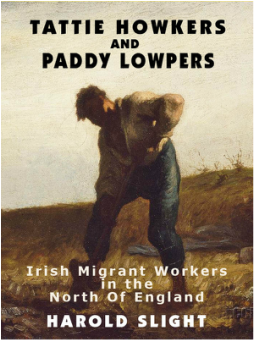
A book about the lives and occupations of itinerant Irish immigrants in the north of England. It tells the story of how the Irish helped to build the North and of the many characters who left their mark on the landscape. It is written with the conviction of personal experience, enhanced by memories which go back much further through the generations, giving the reader a picture of what life was like for the Irish workers in Cumbria in the 19th and early 20th centuries.
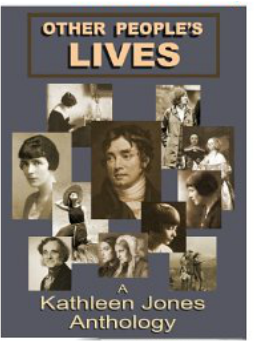
This is a fascinating selection of life-stories both contemporary and historic, written by an award-winning author. There are excerpts from best-selling biographies of writers such as Katherine Mansfield: The Storyteller and Margaret Forster: A Life in Books, fiction, poetry and memoir as well as chapters from a novel ‘The Centauress’ and a glimpse of Kathleen’s latest biography of the eccentric northerner Norman Nicholson, ‘The Whispering Poet’.
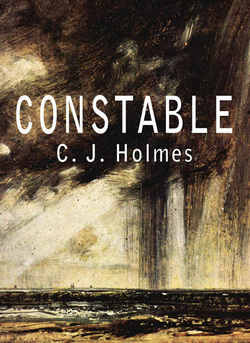
A critical account of the work of John Constable by one time director of the National gallery Sir Charles Holmes. A landscape painter himself, he gives an illuminating account of the development of Constable's art. Only lightly touching on the domestic side of the painter's life, he talks in great detail about the paintings, Constable's vision of painting and his place in the development of landscape painting. Sir Charles' own experience as a working painter and his passion for art gives him the sort of insight that is so often missing in academic art historians.
These days Constable tends to be overlooked in favour of Turner but Holmes puts a strong case for Constable being the true genius of European Landscape painting.
Though this book was written in 1901 it still has much relevance today for anyone interested in painting. Although this text is now in the public domain,
this ebook has been professionally designed and edited by The Bookmill
with interactive links to the illustrations.
These days Constable tends to be overlooked in favour of Turner but Holmes puts a strong case for Constable being the true genius of European Landscape painting.
Though this book was written in 1901 it still has much relevance today for anyone interested in painting. Although this text is now in the public domain,
this ebook has been professionally designed and edited by The Bookmill
with interactive links to the illustrations.
